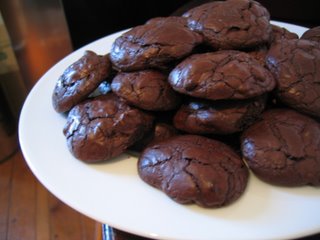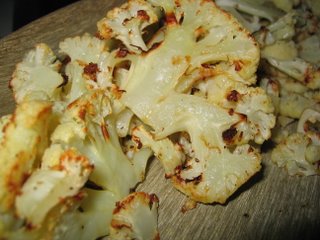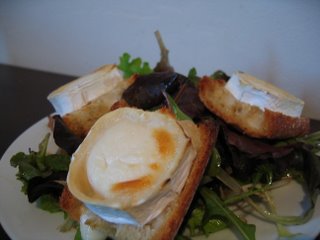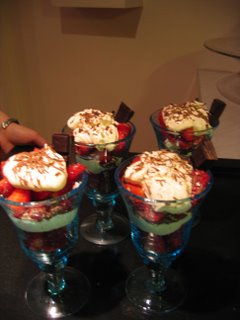 Maybe it's the first Tex-Mex type of thing you eat as a kid, but Tacos were always something I wanted for dinner when I was young. Personally, I prefer "crunchy" tacos made with corn tortillas VS. "soft" tacos made with flour tortillas. Fried corn tortillas piled high with so much filling that they threaten to fall apart upon first bite have so much more texture and interest for me. A whole new world gave way after the first time I fried my own tortilla shells. Wow! They were SO much better. Where had these been all my life?
Maybe it's the first Tex-Mex type of thing you eat as a kid, but Tacos were always something I wanted for dinner when I was young. Personally, I prefer "crunchy" tacos made with corn tortillas VS. "soft" tacos made with flour tortillas. Fried corn tortillas piled high with so much filling that they threaten to fall apart upon first bite have so much more texture and interest for me. A whole new world gave way after the first time I fried my own tortilla shells. Wow! They were SO much better. Where had these been all my life?Having some friends over for Tacos is such a nice relaxed way to entertain since you prepare all the components and let guests build their own meal. Plus, then you can just worry about the drinks. A nice Mojito, anyone? Somehow when you fry your own tortillas, marinate the chicken, chop fresh cilantro and serve ripe tomatoes and avocado slices, you elevate the idea behind those janky store-bought Taco Bell kits into a thoughtful, healthful and fresh meal. You can keep it to yourself how easy it is.
There's a monthly "I Loathe Sandra Lee" recipe event at Foodie NYC and this was my submission. It's not that I'm against finding shortcuts in cooking or that I don't understand the need to make meals quickly. There are sacrifices to be made. But, there is a big difference between making these lovely Tacos posted here and Sandra Lee's version of quesadillas that includes jarred Kraft guacamole dip. Have you seen some of the crap this woman makes? Only the devil would actually use the powdered cheese packet from a package of macaroni and cheese in a separate recipe. She's not creative; she's insane! "Let's see, I've got a can of frosting, some Doritos, Kraft cheese whiz and 1/2 bottle of vodka...the sky's the limit!" So, I thought I'd join the fight to show that you can still use shortcuts and canned ingredients without poisoning your loved ones!
As you probably can guess, the usual suspects on this taco buffet are some type of shredded or diced meat, (I usually saute chicken breasts seasoned with chili powder, cumin and garlic, etc but marinated steak works well, too) diced red onion, chopped tomatoes, sliced avocado, shredded cheddar or monteray jack cheese, a bowl of salsa, a bowl of sour cream, and chopped fresh cilantro and/or lettuce. I usually also go for some refried beans or black beans, too.
My favorite Spicy Black Beans are these:
1 can of black beans, rinsed and drained, and sauté
So, here is the method for the tortillas and a little encouragement from me to fry your own!
Heat 1 inch of olive oil (or veg oil) in a wide skillet. The oil is hot enough when the added tortilla sizzles aggressively.
 Using 2 forks, quickly fold the tortilla in two, and hold for 5-10 seconds to cook the bottom side. When that side is firm, but not yet brown, rotate the tortilla to cook the other side. Remove the
Using 2 forks, quickly fold the tortilla in two, and hold for 5-10 seconds to cook the bottom side. When that side is firm, but not yet brown, rotate the tortilla to cook the other side. Remove the  finished tortilla shell to a paper towel lined plate and sprinkle with salt. Let drain until ready to eat. Repeat with other tortillas.
finished tortilla shell to a paper towel lined plate and sprinkle with salt. Let drain until ready to eat. Repeat with other tortillas.For those times when we're feeling like a salad would be good for us, but are still craving Tacos or something equally divine, here's a lighter Taco Salad. If you do a search for Taco Salad recipes, you will most likely find a plate of lettuce covered in a heavy, spicy ground beef mixture, crushed chips and a dressing made from all sorts of bottled ingredients. Usually this type of salad seems larger and less healthy than just eating tacos! I saw one that combined Thousand Island Dressing, salsa and sour cream for the salad dressing.
Anyway, I find dressings to be the main obstacle for me in taco salads. I've tried some that sounded good, like a mixture of lime juice, cumin and other spices and oil, which seemed logical, but tasted strange. This time, I just sort of ignored it and made an oil and vinegar dressing with a bit of garlic and it was perfect! It didn't add any weird flavors or take away from the other ingredients. Plus, when you add a dollap of salsa and sour cream, it sort of makes a dressing on its own. I find this taco salad to be just as delicious and satisfying as the heavier versions. It's easy and nothing terribly inventive, but it's fabulous nonetheless.
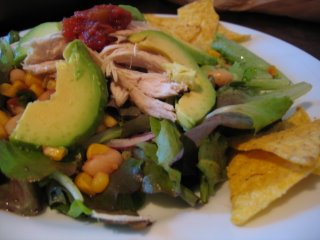 Chicken Taco Salad
Chicken Taco Salad2 large handfuls of sturdy greens...romaine lettuce, etc
1 1/2 cups shredded or chopped cooked chicken
1 can black, red or pinto beans, rinsed and drained
1 small can corn, drained
pinch of chili powder, cumin and cayenne
3 Tbsp salsa, plus more for topping
1/2 red onion, sliced thinly
1/2 ripe avocado, sliced and lightly salted
1/2 tomato, chopped
3 Tbsp grated cheddar cheese
2 handfuls plain tortilla chips
sour cream
Mix together a simple oil, vinegar and garlic dressing. Mince 1 small clove garlic into 2 Tbsp vinegar (I used balsamic but any will do) and stir in 2 Tbsp olive oil until combined. Toss the lettuce lightly with this vinaigrette.
Heat the beans and corn together in a skillet. Diced red pepper would be a nice addition, too. Season with the spices and saute a few minutes. Stir in the 3 Tbsp salsa and remove from heat. This makes more than enough for 2 salads, so you will most likely have leftovers of this.
Assemble the salad: Put a large layer of the lettuce down on a plate. Spoon about 1 cup of the bean and corn ragu over the lettuce. Top this with a handful of chicken. Scatter the avocado, red onion, tomato, and cheddar cheese over the salad and top with a spoonful of salsa and/or sour cream. Crush a handful of tortilla chips and sprinkle over the salad or serve on the side. Serves 2.


